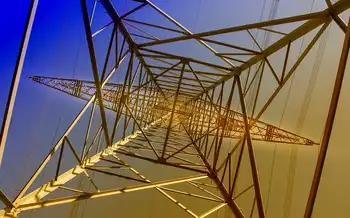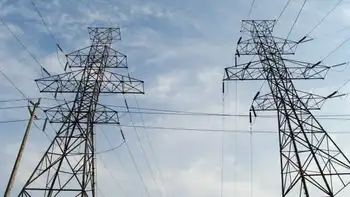Clean Line Withdraws in Iowa Pending Illinois Court Decision
NFPA 70b Training - Electrical Maintenance
Our customized live online or in‑person group training can be delivered to your staff at your location.

- Live Online
- 12 hours Instructor-led
- Group Training Available
Rock Island Clean Line faces regulatory delays as the transmission line awaits Illinois Supreme Court review, pauses Iowa Utilities Board proceedings, and defers eminent domain steps for a project delivering wind energy and grid infrastructure.
Key Points
A privately financed 500-mile transmission project delivering 3,500 MW of wind power to Illinois and eastern states.
✅ 500-mile line from northwest Iowa across Illinois
✅ Seeks permits; Illinois approval under Supreme Court review
✅ Eminent domain steps paused pending regulatory outcome
The Houston-based Clean Line has been working for years to get approval for the Rock Island Clean Line project, a 500-mile line stretching from northwest Iowa across Illinois.
The line, which would deliver 3,500 megawatts of power to Illinois and states in the eastern part of the country, has drawn opposition from rural landowners and others, similar to New Hampshire hydropower clashes seen elsewhere. Its route would include Scott and Rock Island counties.
The company has gone before regulators in Iowa and Illinois seeking permission to build. And while the Illinois Commerce Commission granted permission in 2014, the case has been tied up in the courts. An Illinois appellate court reversed the commission’s decision in August, and last month the state’s Supreme Court agreed to review the case, echoing how a Maine court revived Hydro-Quebec exports in a separate corridor dispute.
Clean Line officials said Dec. 22 the timing of the Illinois court case and a schedule set out by the Iowa Utilities Board led the company to the withdrawal.
“Under the IUB’s timeline, we would have been required in January to identify specific parcels for eminent domain application in several counties, and we did not wish to do that at this point,” Clean Line Energy Vice President Hans Detweiler said in an email. “We prefer to get resolution of the Illinois approval first, and then revisit the Iowa process.”
The Iowa board approved a procedural schedule in August that would have required all the parcels pegged for eminent domain to have been identified by May.
A Clean Line filing with the utilities board Dec. 22 said it did not expect the Illinois Supreme Court to issue a decision before next May. And it added that it would not be an “efficient utilization of resources” to go forward, even as construction on a disputed corridor proceeds elsewhere, including submitting documents related to eminent domain proceedings, until the case is decided.
Critics of the project hailed the decision but were nonetheless cautious.
“I think that we have to be guardedly optimistic because we’ve been in this for three-plus years,” said Carolyn Sheridan, president of the board of directors of the Preservation of Rural Iowa Alliance.
Opponents have worried that land would be condemned for the project, as seen during Maine’s 145-mile line debate over land use, and they’ve worked to convince landowners not to sign leases for the line to run through their land. Sheridan said they have been successful in limiting the number of leases. Critics also have cast doubt on the economic benefits.
Clean Line, though, said even with the withdrawal Dec. 22, the need for such a transmission line remains.
“Projects backed by private investment like the Rock Island Clean Line address our country’s continued demand for electric infrastructure,” Detweiler said.
The company has said the Rock Island project will bring about a $7 billion investment in new wind farms and save millions in energy costs, similar to Alliant’s carbon-neutral plans touted to save billions.
What happens from here appears to depend largely on what the Illinois Supreme Court does. Clean Line said it will make a determination about a new filing after the court makes its ruling.
The company’s Iowa case was filed two years ago, but Detweiler said that much of that time has been taken up with procedural matters and a new filing does not mean it would take another two years to get to this point again. In a news release dated Dec. 22, the company said the Illinois case could be resolved as early as the middle of 2017.











